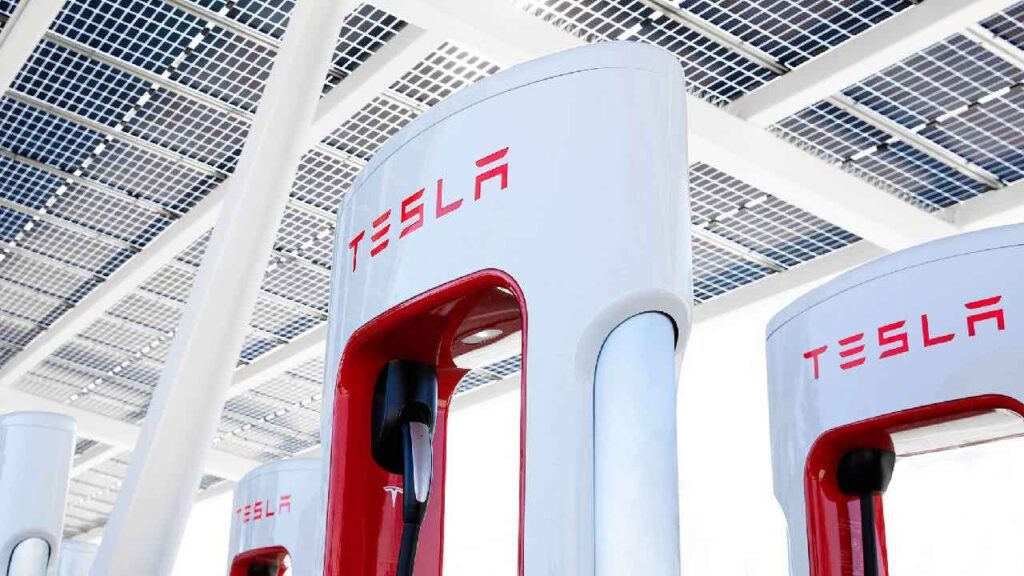EV charging stations are being installed at a rapid pace across the country but it doesn’t come without its problems and challenges.
Electric cars seem to be the inevitable mobility trend that this generation is heading toward but the problems and issues associated with the EV charging stations pose a huge hurdle to reaching that point. While most of us are aware of the general challenges of the industry like high initial costs, charging times and range anxiety, the real focus needs to be on developing the charging infrastructure. That, alone, is the most arduous task that has the potential to dispel other issues and propel mass adoption.
You might also like: Can Electric Car Batteries Be Replaced or Swapped?

EV Charging Stations In The U.S.
When you think about it, the challenges related to the EVs costing almost at par with the standard internal combustion engine cars (around $35,000) and offering a decent range of around (300 miles on a single charge) are somewhat remedied, but the comparison of the number of gas stations (150,000) and EV charging stations (46,000) is what is still far away at this point in time. Even worse, out of these 46,000, less than 10,000 charging stations have the capabilities to charge any EV irrespective of make or model. Also, the total number of DC Fast charging stations in the U.S. hovers around just 6,000.
You might also like: 2022 Polestar 2 Electric Car – Range, Interior & Specs
Companies Offering EV Charging Stations
There are primarily 4 key players in the space, ChargePoint, Tesla, Electrify America and EVgo.
| EV Charging Companies | ChargePoint | Tesla | Electrify America | EVgo | Others |
| Total Charging Stations | 30,000 | 6,000 | 800 | 850 | 8,000 |
| Fast Charging Stations | 1,700 | 1,300 | 750 | 840 | ~1,400 |
Now, the Tesla Supercharging Stations have a maximum of 250 kW charging which amounts to about 200 miles of charge in around 15 minutes. However, it must be noted that the EVs from other carmakers are not equipped to be charged at these stations as this is a Tesla-exclusive affair.
The other end of the spectrum is that not all vehicles come with the feature of fast charging or compatibility with every charging socket (Tesla Supercharger, J1772, CHAdeMO, CCS). That is what narrows the possibilities of any EV being able to charge at any charging stations across the country significantly. Therefore, the effective number of charging stations where every kind of electric vehicle could be charged is under 10,000. There lies the biggest hurdle in terms of infrastructure.
You might also like: Tesla Battery (4680) vs BYD Blade Battery – Comparison
EV Charging Infrastrucutre Cost
According to some estimates by industry experts, a regular Tesla Supercharging Station with 6-8 stalls delivering 120 kW to 150 kW each would cost roughly $250,000 to build. On the other hand, Volkswagen-owned Electrify America charging stations with similar specs would cost around $350,000. There lies the biggest problem with the EV charging stations. One can’t simply build these overnight, or even in a couple of years. And until this aspect is sorted, improving the range and bringing down the cost of EVs isn’t gonna achieve much in terms of mass adoption, although the EV makers will achieve that nevertheless.
This is because we are at the point where the cost and range have become somewhat decent and accepted by the general public. It is the anxiety caused by not knowing where the next charging station is, that is preventing people from going for an EV. That is where the government support is needed the most as this job is too herculean for any single company. It could offer incentives to players to develop the charging infrastructure just like offering incentives to the people to buy EVs.
You might also like: What Is Vehicle To Load (V2L) & Which EVs Have This Feature?
Correct Way of Charging EVs
Another relevant aspect of EV charging is the fact that the battery of a car (or any other electronic gadget) charges fast at the beginning (typically up to 50%) but requires significant time for the other half. Hence, people must try to charge their batteries up to 50% at one stop, drive and then make another stop to charge for 50% again, while on the highway. Overall, this will save them more time compared to when they charge the EV until 100% at one charging station.
These are some habits that EV owners need to inculcate in order to squeeze the maximum range and spend minimum time at the charging station. However, for this, again, plenty of infrastructure is needed so that people quit the anxiety about finding the next charging station.

Pingback: dultogel 777
Pingback: wafer inspection lamp
Pingback: fn cheat free
Pingback: Jason
Pingback: บาคาร่าเกาหลี
Pingback: บริการรับสร้างบ้าน
Pingback: betflix allstar
Pingback: แทงบอลวอเลท ฝากถอน ไม่มีขั้นต่ำ
Pingback: lucabet
Pingback: live naked girls
Pingback: Formula 1 shake
Pingback: slot99
Pingback: ขั้นตอนการเล่นไพ่ บาคาร่า
Pingback: ส่งsms
Pingback: Huc99 เครดิต ฟรี 50
Pingback: dultogel
Pingback: cinemakick
Pingback: cinema kick
Pingback: โคมไฟ
Pingback: recipesjelly
Pingback: เค้กด่วน
Pingback: บาคาร่า all เกมไพ่ผ่านมือถือ เดิมพันขั้นต่ำ 1 บาท
Pingback: โอเล่777
Pingback: betflix wallet
Pingback: superslotmax
Pingback: mushroom gummies
Pingback: วัดสายตา
Pingback: som777
Pingback: ของพรีเมี่ยม
Pingback: th168
Pingback: Neptuxe
Pingback: บาคาร่า ufa11k
Pingback: ร้านเค้กวันเกิดใกล้ฉัน
Pingback: haqiqiy pulga kazino